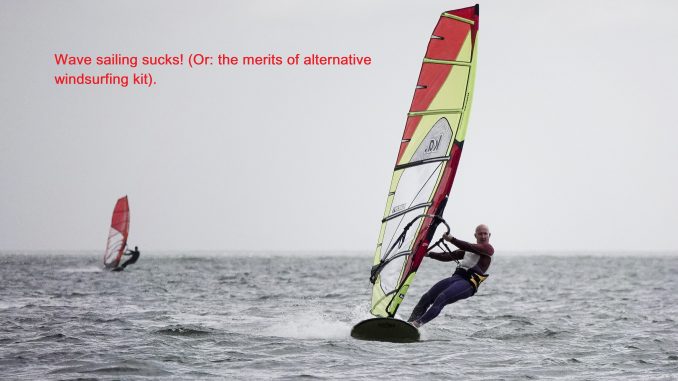
Words: Tez Plavenieks
Pics: Tez Plavenieks, James Jagger.
That title probably grabbed your attention! Read on to find out if the sentiment rings true as Tez Plavenieks talks about increasing your chances of scoring fulfilling windy sessions.
Before we get stuck into this let’s just set the record straight: wave sailing doesn’t suck! But it’s a bloody frustrating part of windsurfing that many riders are in the habit of chasing. In many cases to fruitless ends too often. Especially when other forms of windsurfing would fit the bill so much better. Or in the face of decent waves and no wind using an alternative form of surf craft altogether.
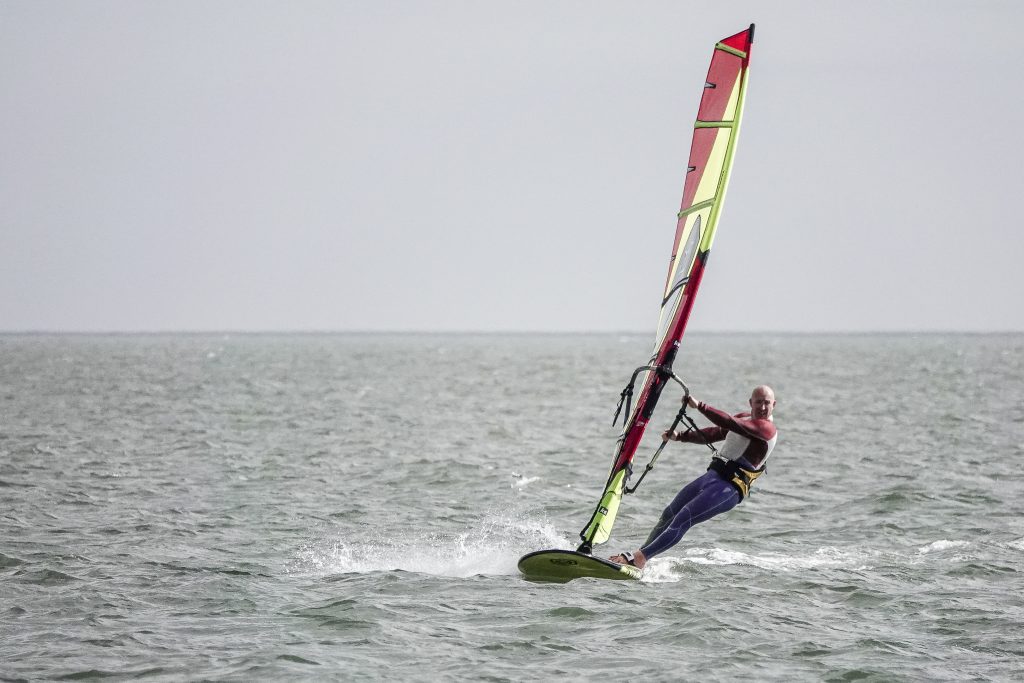
Unfortunately, as windsurfing’s matured, and become ever more performance orientated, the equipment has opened up a whole new bunch of possibilities and the lure of wind AND waves has become too much. As such, even during marginal blows and flat seas, sailors are still stuck in a wave mindset. Of course, what one determines to be a wave is another sailor’s ripple, but you get where I’m coming from.
At the merest sniff of a gnat’s fart windy vehicle procession to the beach, laden with all manner of maneuver oriented gear, begins. Before long the car park’s full – mainly of forlorn looking faces gazing out to sea as yet another predicted bout of windsurfing weather fails to materialise. For those with responsibilities – work, family and stuff – it’s infuriating. That 80L wave shredder hasn’t been used in months whilst the 100L trick stick has only had a few runs out. And let’s not mention that spangly new 3.7m you convinced the other half you definitely needed for all those storm force days! Sod it! You may as well bite the bullet and buy a kayak…
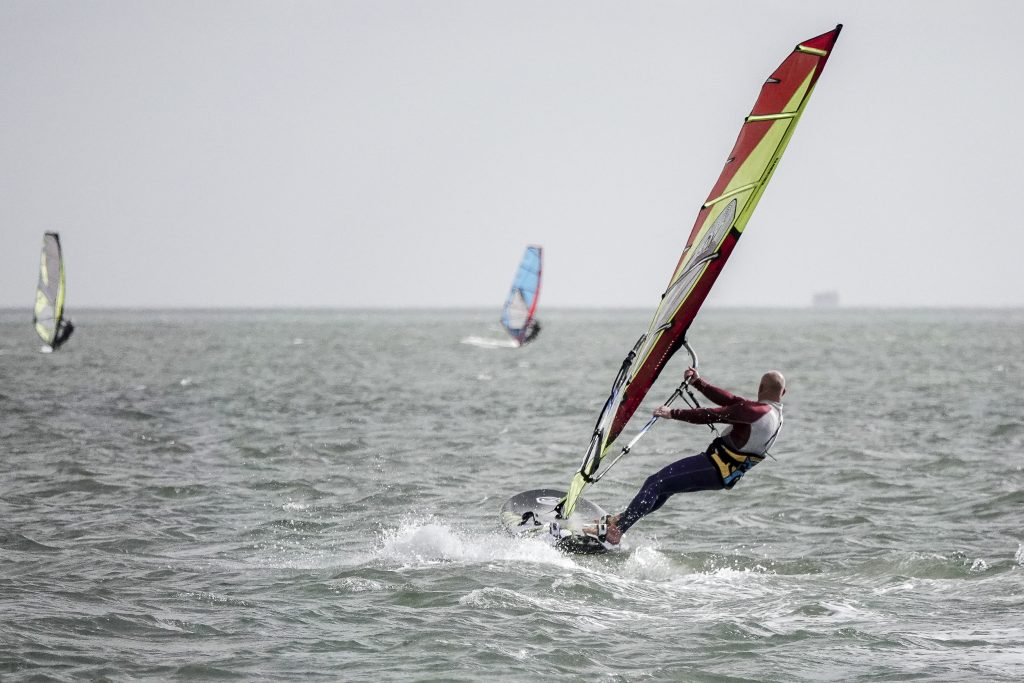
I’m sure many reading this will sympathise and recognise the above situ. But how did we end up here?
Take subject A who learns to windsurf on in a paradisical overseas location with steady Trade Winds and barely ruffled waters. The surrounding reef protects an inviting lagoon with water so blue it resembles a swimming pool. Before long, with such pro tuition and high end kit on tap, their windsurfing skills have progressed and he/she is now belting along hooked in with feet edging ever nearer those elusive footstraps.
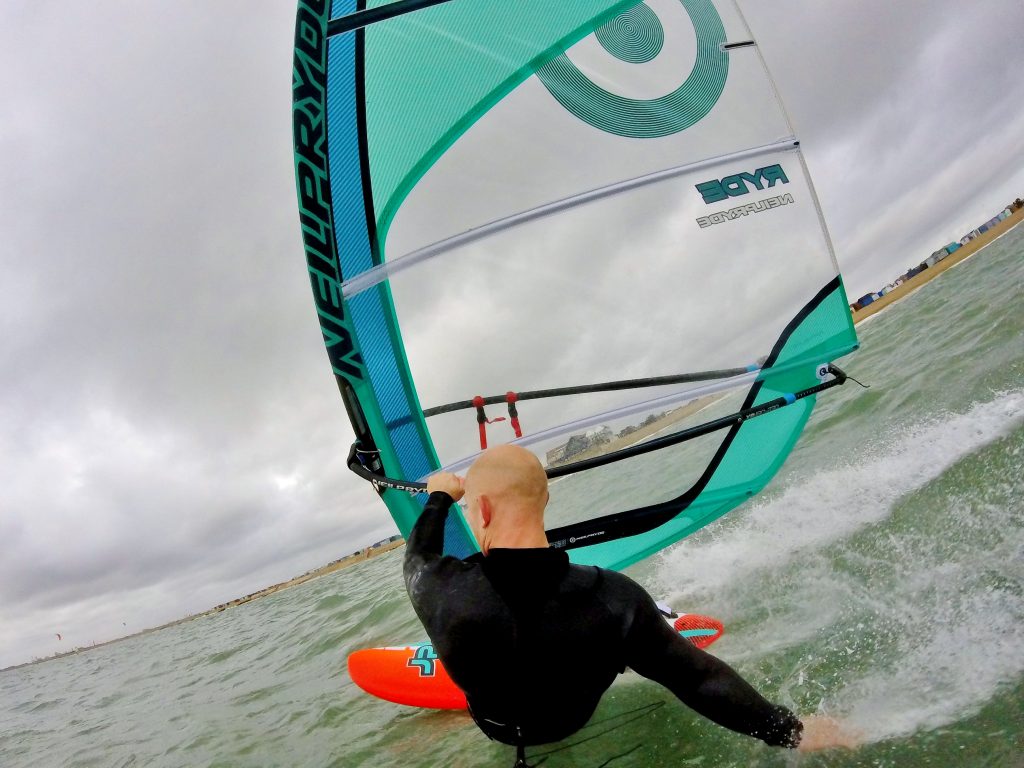
A few more goes, pep talks and some further guidance has more blatting like a good ‘un. Fast forward and he/she has now dropped a board size to something livelier and they’re making frequent sojourns to the coast. It isn’t quite the Tropics but there’s wind and he/she is well on the way to nailing those corners.
During one particular fulfilling session the decision is made to try something new and air time is achieved. The lightbulb goes off and armed with a mile wide smile it’s to the local windsurfing emporium with fistfuls of readies. The result is more curves on that new board than a banana. He/she is soon the proud owner of a super maneuverable windy sled and associated sails. Unfortunately, that bigger gear had to be sacrificed and sold to pay for new, a decision now being regretted as a sunny 15 knots puffs sideshore across the beach.
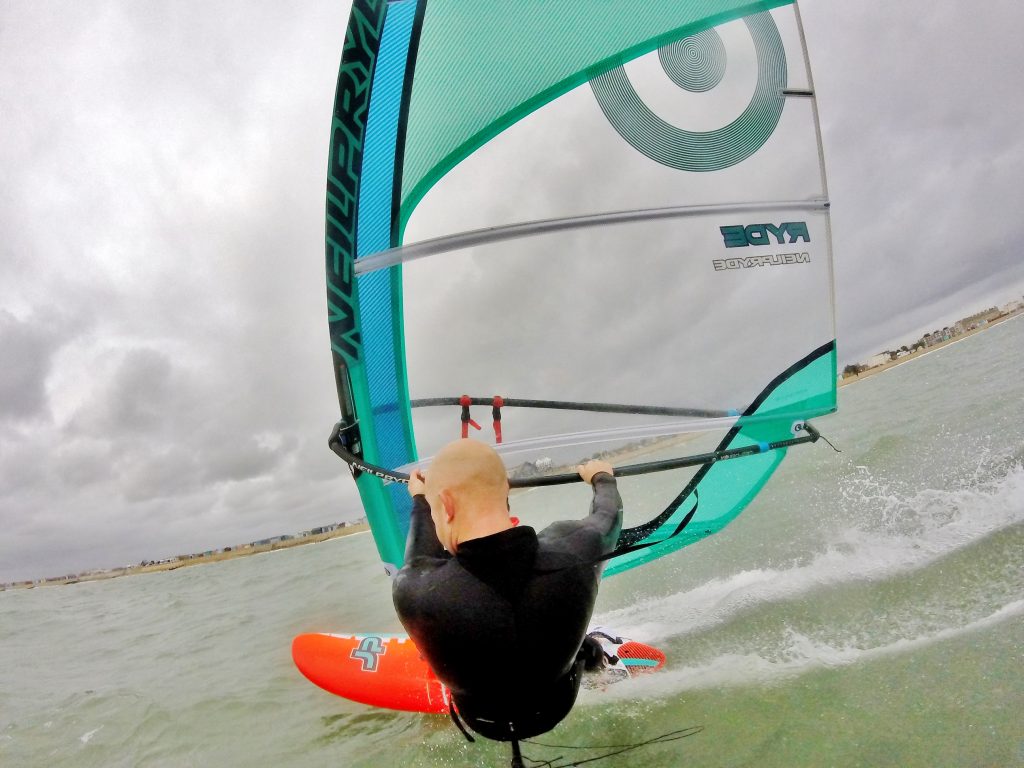
With the best will in the world we’d all be smashing out our smallest gear and getting amongst the flotsam every session. For most, to accomplish this a serious amount of mileage and driving to those conditions would be required. With life constraints already mentioned most sailors head to their tried and tested spot as it’s a safe bet and reachable with enough time to get back home before the kids are in bed.
Reading through many windsurf mags and seeing what ends up online will have you thinking every other sailor (apart from you) is up and down the length of the country, scouring for conditions, daily. This just isn’t true, however. What you’re seeing is ‘the dream’ being sold by marketing gurus and pro riders whose job it is to get you frothing. 90% of all windsurfers are simply in no position to do this kind of thing. Most windsurfers will do what’s already been explained: hit their local on a predicted forecast, hoping for some classic conditions.
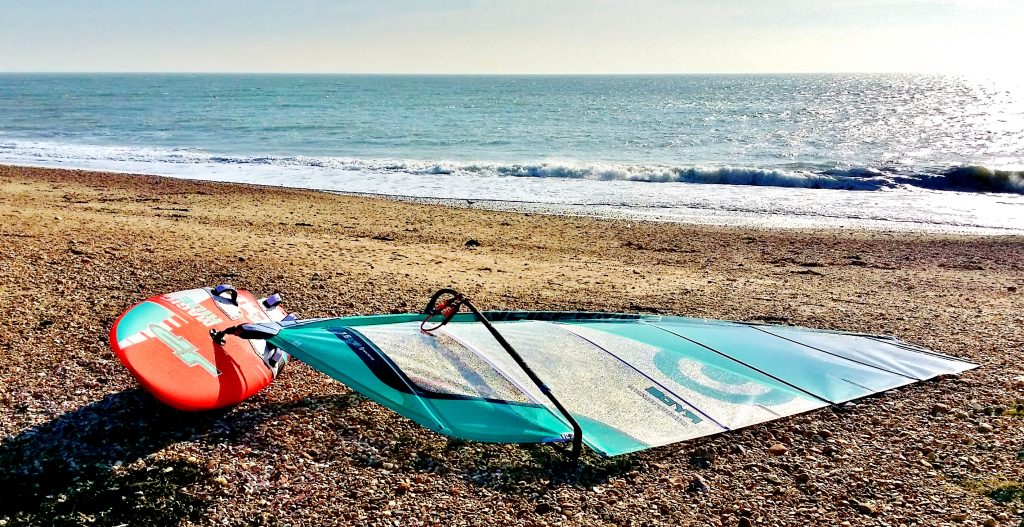
Now don’t get me wrong. Skunkings are par for the course when talking about any kind of sport relying on Mother Nature’s moods, not least windsurfing. Yet with a better choice of quiver the majority of windsurfers would up their water time no end. Things are changing, slowly, but there’s still a way to go and more open minds needed.
It’s all very well suggesting blasting back and forth is boring, which I’ve heard a lot. I totally get wielding a 9.6m isn’t for everyone. Yet most don’t need to go this big. Even plugging a 6.5m into a 122L board will see more sessions scored. And owning this type of gear doesn’t need to break the bank. You don’t have to go all out and buy new, there are plenty of bargains to be had if you look in the right places and are prepared to ‘move’ when a deal pops up. And to be honest, if you think skimming back and forth atop the brine, absorbing some much need Vit D, whilst experiencing and appreciating your natural surroundings is dull then you’re a lost cause. After all, these are the feelings that drew you to the sport initially.
Of course, when your number comes up that magic chart will deliver and you’ll enjoy some awesome windsurfing, possibly of a wave flavour. In the meantime maybe it’s time to re-visit your windsurfing roots and get hold of some appropriate tools for the job and get more time on the brine windsurfing…
Don’t forget to check out the following articles –

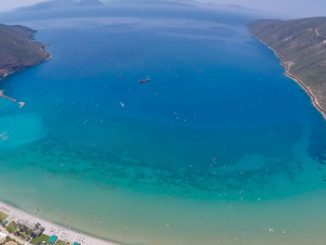
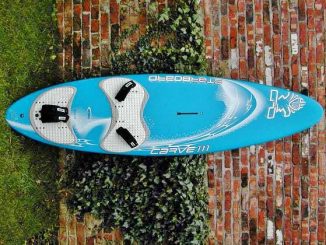
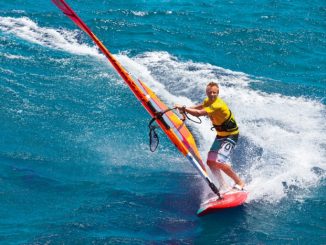
Leave a Reply